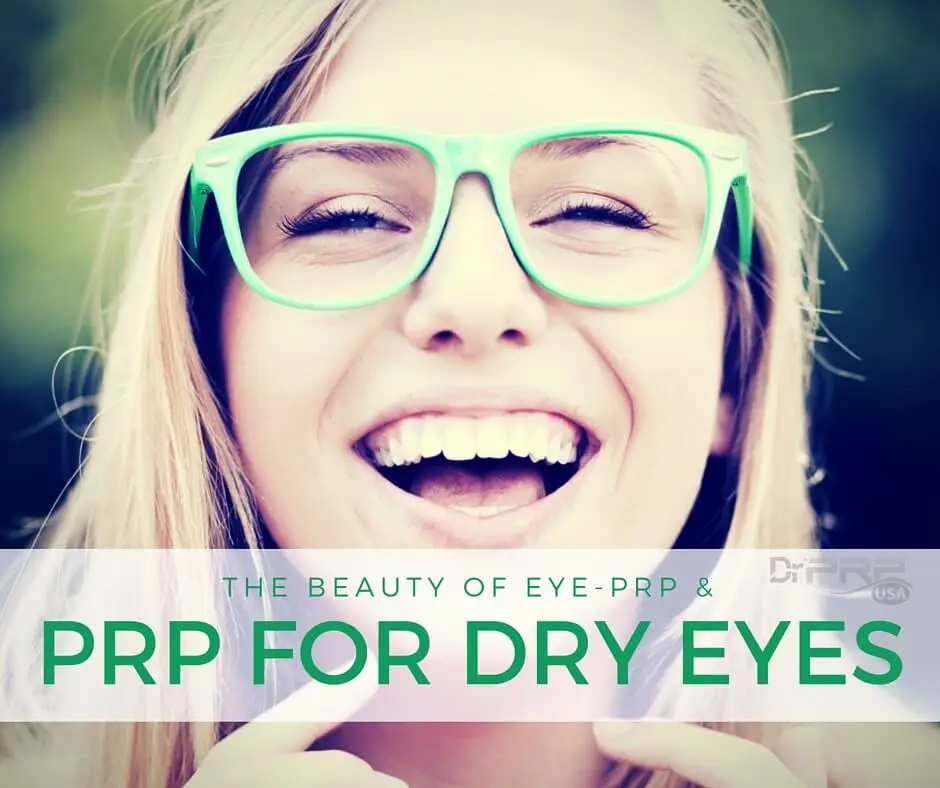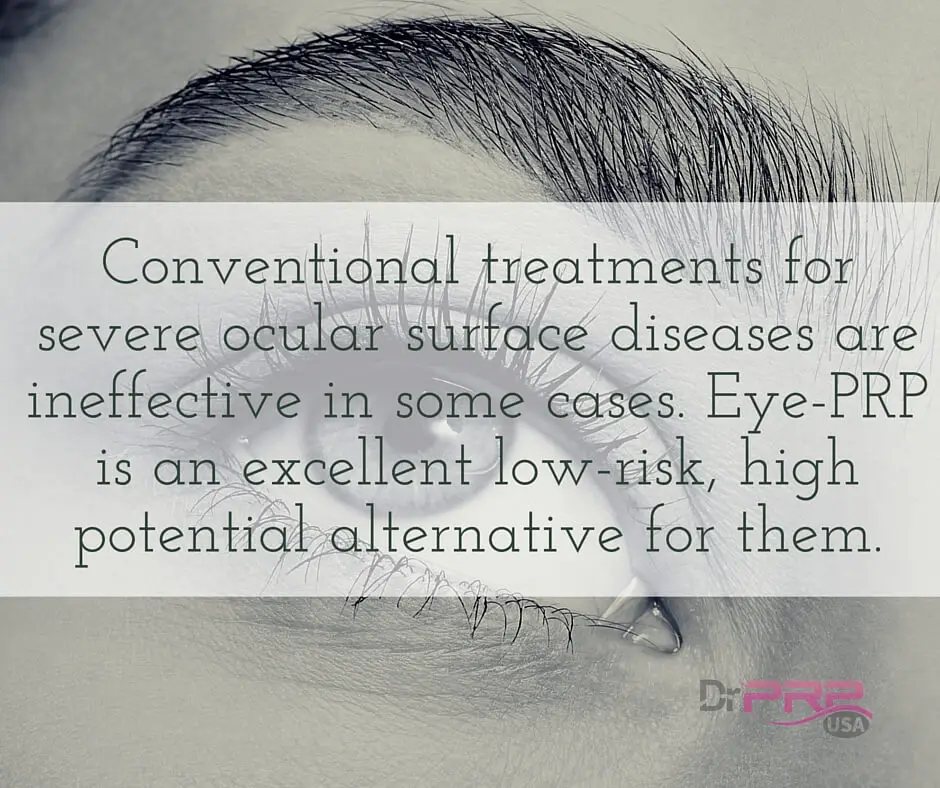| Item | Price | Qty | Total | |
|---|---|---|---|---|
 Loading Cart...
Loading Cart...The Beauty of Platelet-Rich Plasma (PRP) for Dry Eyes

The ancient Egyptians had a prescription of incense, myrrh, and lead salt as dry eye remedy in the 1500 BC. Today we have over-the-counter artificial tears and gels that basically do the same thing. Which means there hasn’t been a breakthrough in treating this ocular conditions for about 3500 years.
The condition causes some serious discomfort for patients — beginning with mild irritation to eye-pain to burning sensations. The major problem with artificial tears and gels is that they don’t last long enough. There are a variety of other treatment options like thermal pulsation, IPL and probes to open up the Meibomian Gland Duct, none offers a generic sure-fire long term solution.
Except this one treatment is getting a surprising amount of traction — PRP Serum Drops.
Platelet-Rich Plasma For Dry Eyes
It seems human tears are full of growth factors including cytokines, albumin and vitamins. The artificial tears and gels try to mimic this constitution but is nowhere near as effective. That’s when someone decided to try applying Platelet-Rich Plasma instead. Not only it is made of similar content as the natural tears, but it also has no preservatives, stabilizers and additives found in the artificial stuff.
And boom! It worked, and wonderfully so. Doctors couldn’t stop recommending them.

Here’s How It’s Done
Eye-PRP or PRP Serum For Dry Eyes or Autologous Serum Eye Drops (ASEDs) is obtained by mixing Platelet-Rich Plasma with Saline solution. Platelet-Rich Plasma is made by drawing 20cc blood from the patient’s arm and centrifuging it for a couple of minutes. This is combination of PRP and saline solution has almost the same salinity and PH as that of the actual tears so there’s no issue of stinging or burning.
This ideal concentration for PRP and saline mixture is 20% — for every 40cc of saline solution add 10cc of 100% serum to make 50cc of Eye-PRP. Then they are loaded into 3ml dropper bottles each containing 2ml of Eye-PRP good for about 40 drops. These are to be refrigerated or frozen and dropped into the eyes 2-3 times a day.
Case study of a 74-year-old woman
Here’s one of the numerous case studies that favor the treatment. In the study, one 74-year-old woman with a 3-year history of severe dry eye who had tried various tears, gels, ointments, steroids, azithromycin, cyclosporine and omega-3s, reported amazing results after using Eye-PRP.
The researcher, Edward S. Jarka, OD, MS, of the University of Missouri-St. Louis School of Optometry, says:
“After 3 weeks of 30% PRP concentrate twice a day, and after discontinuing all other medications, she noted some improvement. After 8 weeks she was able to return to contact lens wear and her outdoor activities. She has remained free of discomfort 2 years after discontinuing the PRP.”
Justifiable out of pocket costs
A single blood-draw and centrifuging process using a kit like Dr. PRP can produce a three-month supply of Eye-PRP drops. It can cost $300 for a patient, which like any other eye-drop medications, are not covered by medical insurance. This is often a barrier for a patient. Over the long term though, the results like the one we mentioned above are priceless. Not only are they able to discard other OTC eye drops, but they eventually dropped Eye-PRP as well and remained symptom-free for years.
Truth is, if you have long term dry-eye symptom, it’d be foolish not to try E-PRP. We’d all want the speedy recovery we need. But for many Americans, this little out-of-pocket medical cost can be an insurmountable wall. Left untreated, dry-eye symptoms can also have an impact on people’s attractiveness.

Also used for epithelial recovery in post-LASIK corneas
Eye-PRP drops are also known to promote the growth and repair of the epithelial layer of the cornea. In fact, Eye-PRP can be used to heal all kinds of epithelial wounds in the ocular surface, especially during post-LASIK recovery. Researchers also found Eye-PRP to be useful to treat recurrent corneal erosion (RCE). According to one research, it has almost permanent results — they monitored each patient participated in the study for an average of 30 months after discontinuation of Eye-PRP and none of the patients experienced recurrent episodes of corneal erosion. Here’s an article by Paul M. Karpecki, O.D., and Diana L. Shechtman, O.D. in the Review of Optometry back in 2011, where the study was mentioned.
If you’re an optometrist or an ophthalmologist, and are looking to offer Eye-PRP for your patients with dry-eye, corneal ulcers and recurrent corrosions…
Here are the key things you need to know.
- They are extremely easy to prepare if you have a centrifuge and a proper kit like Dr. PRP.
- Eye-PRP is usually should be prepared ready-to-use in 3ml droppers and stored in refrigerator.
- Patients are expected to put 2-3 drops for 3-6 months
- After stopping the treatment, the results will be almost permanent.
- Since PRP is a completely natural healing agent, patients’ eyes experience other beneficial properties in addition to the one they’re being treated for.
That’s it for now. Choose wisely. Choose Platelet-Rich Plasma.
Adios Amigo.


